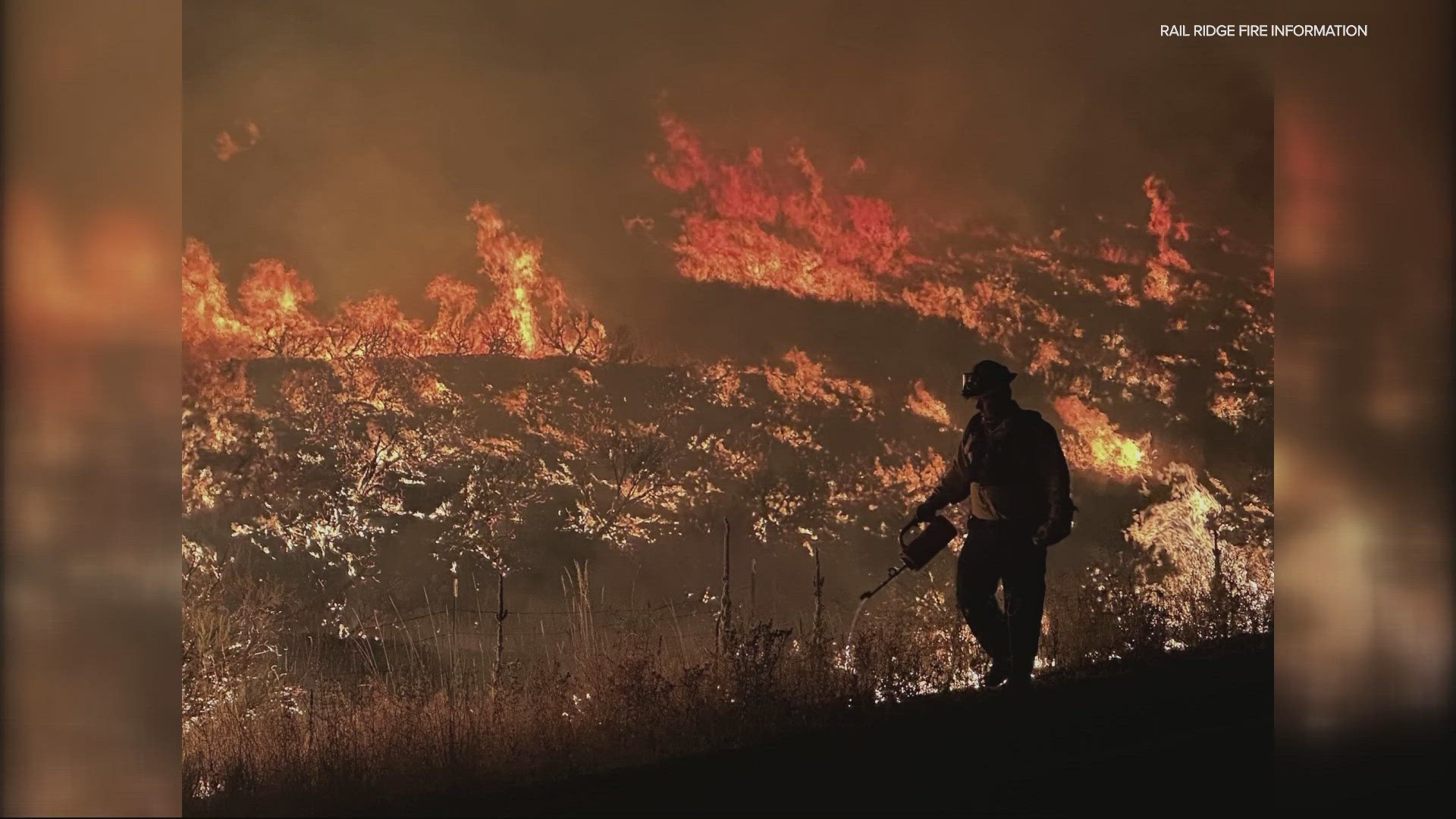PORTLAND, Ore. — There's about two weeks left of summer, but wildfire season in Oregon hasn't ended yet.
There are about 24 large fires burning across the state, according to the Northwest Interagency Coordination Center. All the wildfire smoke has contributed to hazy skies, less than ideal air quality at times, some evacuation orders and required outside assistance. Due to all the fires, the center said that the area is currently under "Preparedness Level 5."
"It focuses on resource allocation that comes across our borders, basically from the other states, and we're prioritized to get those resources," said Carol Connolly, the public information officer at the center.
She said the area has been under Level 5 for the majority of the summer, and after finally slipping down to Preparedness Level 4, the area returned to Level 5 last week.
Connolly explained how the coordination center works to fight the fires. Oregon partners with a number of agencies including the Bureau of Land Management, the Bureau of Indian Affairs, the U.S. Forest Service, National Park Service, and the U.S. Fish and Wildlife Service. Oregon also has state partners: the state fire marshal's office and the Oregon Department of Forestry.
"So those are our core agencies that we do have within the state of Oregon that work together when we get resources from out of state, they can come from anywhere," she said.
Several states have been helping out, like Washington, Idaho, and California. Countries like Australia and New Zealand have also sent crews to help over the last month.
The fires currently burning in Oregon make up about 500,000 acres of active fire, Connolly said. Out of the 24 large fires, one was human-caused, 10 are under investigation and the rest were caused by lightning.
More fires are expected, as Connolly said holdover lightning fires are typical.
"A lightning strike can hit a tree, a single tree, and it might smolder around the base of the tree, and it might take a couple days for it to actually go above the treetop to where we can detect the smoke and find the fire," she said.
Just this last weekend, she said that Oregon saw over 800 lightning strikes.
Connolly said people need to be extra cautious to not contribute to human-caused fires, so that way critical resources don't have to be taken away from the unpreventable fires.
The Red Cross has been assisting those evacuating due to fires. Since June, they have opened up 23 shelters.
"In fact just last weekend, we’ve opened up three shelters, Lake County, Crook County and Grant County, and that’s because of these Level 3 Go Now Evacuations," said Rebecca Marshall, the communications director for the Red Cross, Cascades Region.
The Lake County Center is now closed.
Marshall said it's been a very busy summer for the Red Cross.
Fires like The Rail Ridge Fire in Crook and Grant counties, which is over 135,000 acres, and the Shoe Fly Fire in Wheeler County led Gov. Tina Kotek to invoke the Emergency Conflagration Act on Friday. That allows the Oregon State Fire Marshal's Office to mobilize resources to wildfires when life and property are threatened.
There are three levels, and Marshall said when you get that Level 3 “Go Now” alert, people should listen, and always be prepared with an emergency kit, and a plan.
“Ask yourself, what would happen if I had to evacuate my home at a moment's notice, what would I bring with me, what would I need to grab at a moment's notice, where would I go?" she said. "I’m always pushing to people to heed those "Go Now" evacuations, if you have elderly people or people that may have some challenges, if you hear a Level 2 evacuation, you may want to prepare to leave at that point."
She said even if you don't need to stay the night, evacuation shelters are information hubs, and anyone is welcome to stop by.
"Unfortunately, it’s lasting longer, these extreme weather events are going on longer and longer, so we have to stay prepared longer and longer," she said.

